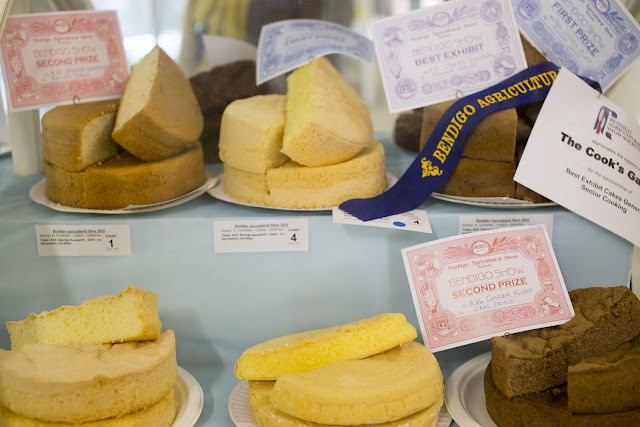Remember that feeling you get when you've entered in a sponge competition and the day is getting closer and closer but you feel terribly unprepared and you want to keep practicing for a few more weeks but it's in, like, two days so you'd better get busy making the real life one that is GOING TO BE JUDGED? I'm sure you know that feeling well.
It's been a month of highs and lows (and yes, I'm talking about the size of our sponges). There have been crusty ones, lumpy ones, solid ones and sunken ones. Wrinkly ones, holy ones, pretty ones and stuck-in-the-tin ones. Regardless of the outcome, these sponges have brought us together with friends and family and have given us the privilege of being the benefactors of some tips and tricks from our experts.
All in all we baked about ten sponges each. Here is a handy pie chart to see where they all ended up. Feel free to do the maths regarding the number of eggs we used and the time we must have spent standing around beating them.
We used Nigella's recipe, Stephanie's recipe, the Woman's Weekly recipe, the Nursing Mother's Association recipe, Marion's recipe and Roger's recipe. By the end of it we had both developed our own, so we'll add Jess's recipe and Leanne's recipe to the list. Did we find the perfect one? Not yet, but perhaps it's less about the perfect recipe, and more about the perfect relationship between the cook and the recipe. And like all good relationships, it takes commitment, patience, time and a sturdy sense of humour.
Cooking the competition sponge was a lengthy affair. We both made three attempts and it's harder than you think trying to decide which is the best. From where I was standing I could see flaws in all of them - all different, but all seemingly fatal. A massive hole in the top, torn sides, cooling rack marks, uneven tan, sinky middle - you name it, my sponges had it covered.
Cue project philosophy: leave perfection at the door and just have a go. Quit looking at shortcomings, and start looking for strengths. My competition sponge was chosen for its positive attitude and kindness towards others, as well as its mostly consistent colour on top. Jess's was chosen for its ability to work well under pressure and it's smooth, golden surface.
When I dropped them off to the Homecraft Pavilion there was a nervous, busy energy in the air and the officials had it all running like a well-oiled clock. I bid the sponges farewell as they were put into their glass display cabinet and I knew that we had done all that we could. I'm not going to lie, I was also dying to hear the inside scoop on how Roger's sponge was looking...
The verdict: There was a limited field of four sponges. Roger's was a little brown around the edges, so he was pipped at the post by mine, which achieved first place. The other two were sponges that anyone would be happy to enjoy at afternoon tea, so that's a definite win too, right? Roger was gracious in defeat and called me up to congratulate me; he had the prestige of winning Best Exhibit with his ginger fluff, so all was right with the world. Phew - his youngest granddaughter has secured her cake stand.
[JESS EDIT - LEANNE FREAKIN' WON THE COMPETITION! And to boot when I went to visit the winning sponge that was perched so elegantly behind the glass in the case everyone was talking about it.]
I'm thinking that next year we we campaign to get as many sponge entries as possible, and really give the show judges something to ponder. Who's in?






















